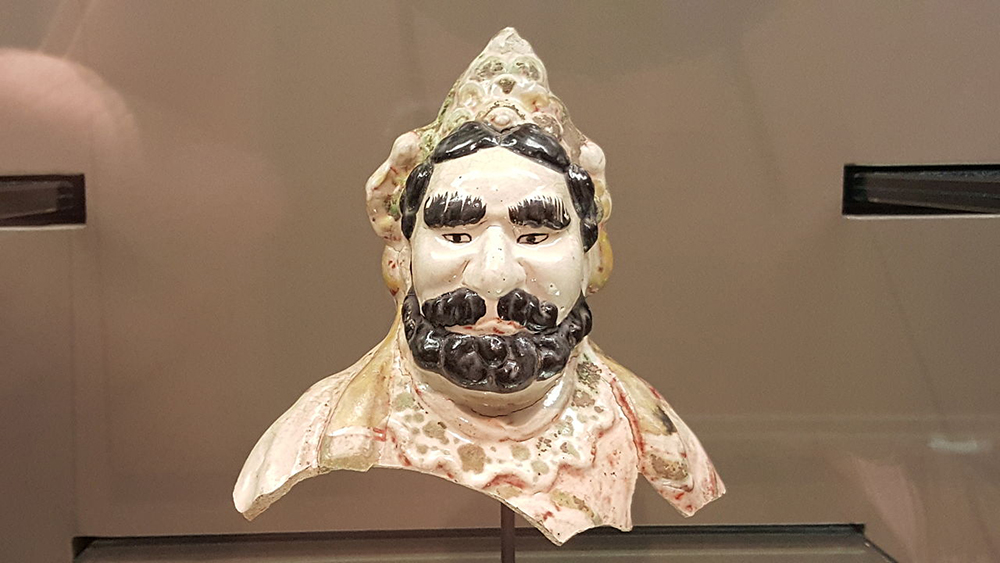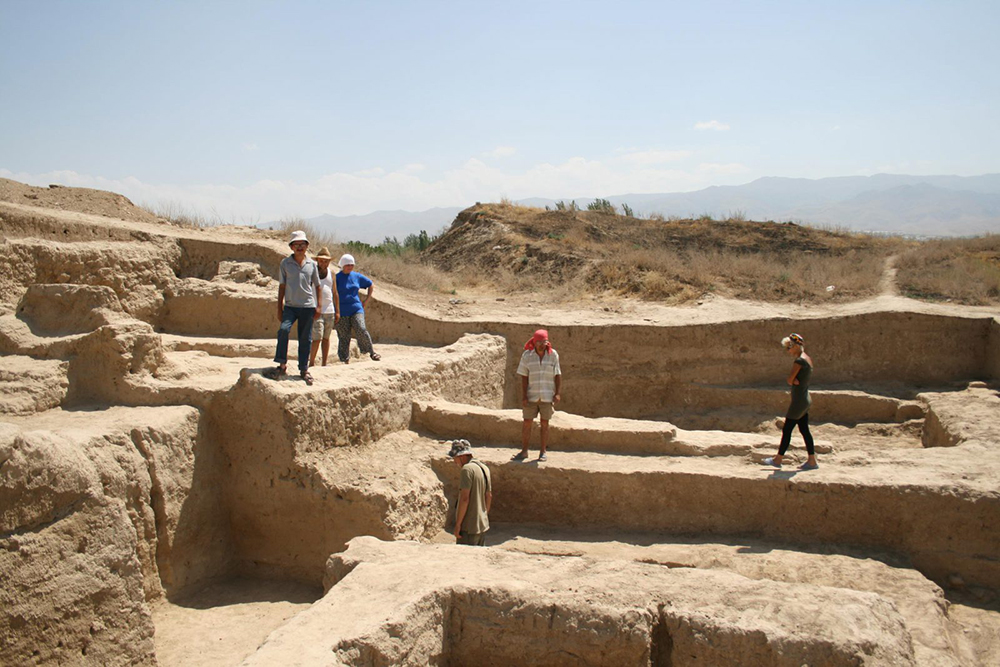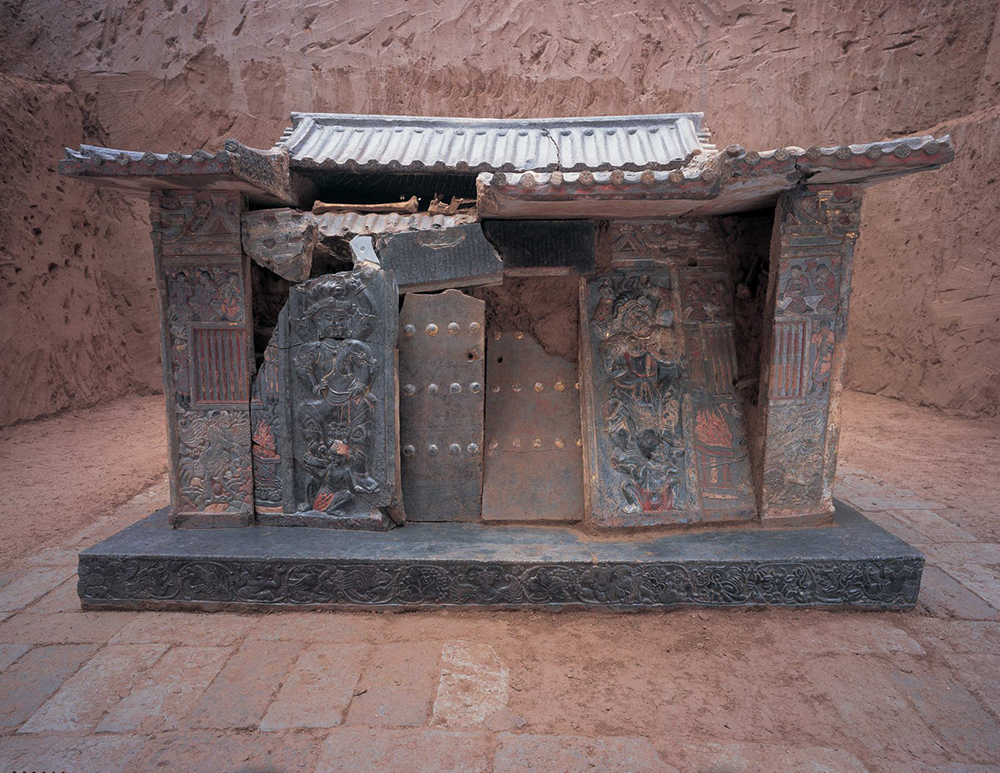Written by: Mahnoor Fatima
Posted on: August 28, 2020 | 
A Sogdian Wall Painting from Pendzhikent
The city of Samarkand (in modern-day Uzbekistan) has been the central city through which the threads of the Silk Road have passed and weaved. The city has been popularized extensively as one of the great centers of culture, activity and intrigue – a crossroads of world cultures. While Samarkand has been equally vital to Mughal history, as the Emperor Babur’s promised land of return, this is the story of Samarkand of the Silk Road. The key characters are not great rulers, kings or conquerors, but Sogdian merchants, artisans, entertainers and farmers who moved and shaped the great Silk Road in subtle yet impactful ways.
The Sogdians were an Iranian civilization that existed between the 4th and 8th century CE. They were not a coherent entity bound by geographic boundaries, but a group of multicultural people scattered across a vast area of towns and agricultural land between the great empires of Asia. They had no army or military power, but were mostly multilingual and practiced various religions. Archaeologists have discovered that the Sogdians developed a sophisticated and unique urban culture that was an accumulation of their travels and networks. Evidence shows that merchants did not only want to peddle commodities, but had a genuine interest in their desire to seek knowledge and cultural exchanges.
It was the Sogdians who played a central role in transporting goods across the Silk Road, and Samarkand was their headquarters. They principally dealt in cloth (particularly silk), metalwork, and luxurious goods, using their skills and adaptability to travel to far-reaching areas of Asia. Around the 6th Century, their networks stretched all the way to Chang’an (modern-day Xi’an), China in the East, and Byzantium in the West. In fact, Sogdian murals found in Northern Pakistan, reveal that their networks extended to India in the south.
The fate of the Sogdians is still unknown, as they seem to vanish from historical records by the time the Arab Muslim conquers appear in the 9th Century CE. But key archaeological sites such as the ancient citadel of Pendzhikent, the castle of Mount Mugh and the site of Afrasiyab, are still abundant with artifacts, murals of wedding processions, diplomatic meetings and royal hunts giving insight into the city’s diverse, proto-cosmopolitan medieval society. It was their mobility, flexibility and adaptability which allowed them new opportunities in distant lands. They profited from their carefully crafted identity of “otherness”, which appealed to certain societies like that of the Chinese as “exotic” and foreign.
While Sogdian merchants have been a part of Chinese recorded history since they first started keeping records during the Han dynasty, they became key diaspora figures in China during the Tang Dynasty (618 to 907 AD). Skilled and business savvy, they primarily worked as artists, traders and translators. Many in Chinese society were fascinated by their culture, and the fashions they brought. People of the Tang dynasty were pictured wearing kaftans, feasting and hunting, activities which were popularized by the Sogdians. However, they did not always have such a prime or honorable position in Chinese society, as they also participated in the darker aspects of Silk Road trade like slavery and prostitution. They were also subjected to some ridicule, becoming caricatures with large noses and bulging eyes who danced in a drunken stupor. However, as largely non-elites, much of their experiences in China were never recorded or studied until recently.
Perhaps the most important documents which provide an insight into the lives of the Sogdians, were the famed ‘Sogdian Letters’. They were found by British archaeologist Aurel Stein in a watchtower in Dunhuang, China in 1907. It is most likely that the authors of these letters were Sogdian diaspora whose letters home were confiscated during transit, and never reached their intended destination. They detail key points about the commerce and trade, but also the rituals and traditions of the people, with two of the letters written by women. These letters, as well as the wall paintings further help us understand the inner workings of a culture, that otherwise seems very difficult to categorize and label (to read the Sogdian letters, click this link).
The enigmatic creators of the beautiful city of Samarkand have only just captured people’s imagination, which has led to new and exciting discoveries about life on the Silk Road. Indeed, this group of talented, cultured and well-traveled businessmen who helped expand one of the largest and most profitable trade routes of history, can be seen as blueprints for present-day trade relations, which ought to involve cultural connections alongside business and commerce.



You may also like: